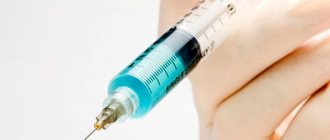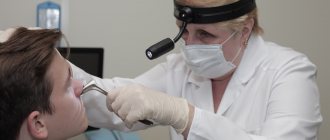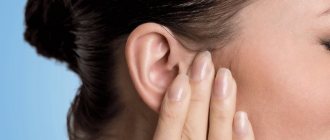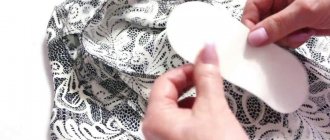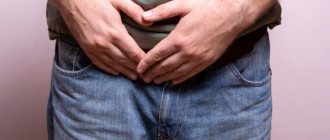The desire to be treated with herbs is not bad in itself: herbal medicine is a branch of scientific medicine, and many mild diseases can be really well cured with preparations from medicinal plants. Pharmacies sell herbal medicines with proven effectiveness. However, the insidiousness of the situation is that the naturalness of any product in the mass consciousness is equated with a guarantee of its safety: you can often hear the opinion that “Herbs cannot harm!” This is not true, and many have already suffered from this misconception. For example, we have already written about the dangers of uncontrolled use of St. John's wort here.
- What is actually treated with celandine?
- Why is celandine dangerous?
- Recommendations for safe use
Great celandine
Next on the list of controversial medicinal plants is greater celandine (Chelidonium majus). For the middle zone, this is the most common plant that can be found almost everywhere. The availability of celandine contributes to the fact that many people independently prepare it as a medicinal plant material and use it without consulting a doctor, guided by advice from the Internet. The results of such self-medication are sad.
Blooming celandine
What is actually treated with celandine?
One of the popular names for celandine is warthog, and this says almost everything: celandine juice has long been used to remove warts. As a means for external use, celandine juice and preparations from its herbs are effective for eczema, poorly healing wounds, dermatitis, mild forms of psoriasis and other skin diseases, as well as for stomatitis and gingivitis (in the form of rinses). Celandine preparations are really good at suppressing the activity of bacteria and pathogenic fungi, and fresh juice, according to some data, can cope with certain groups of viruses. There is evidence that celandine juice can slow down the growth of malignant tumors, but research results are contradictory, and celandine is not used in medicine in this capacity.
As for taking celandine orally, traditional medicine recommends infusions of its herbs for many diseases, including hepatitis. Scientific medicine does not approve of this approach and recognizes celandine as an anti-inflammatory, antispasmodic, analgesic and choleretic agent for certain diseases of the liver and gall bladder - but only as prescribed by a doctor. Taking celandine orally is contraindicated for epilepsy, angina pectoris and bronchial asthma, and is strictly not recommended for pregnant women and children.
Milky juice of celandine
Traditional treatment recipes
For eczema (infusion): mix 5 tablespoons of dry celandine herb, 1 tbsp. a spoonful of tansy flowers, 2 tbsp. spoons of tricolor violet flowers, 2 tbsp. spoons of dandelion root, 2 tbsp. spoons of corn silk and 1 tbsp. a spoonful of chicory root. Pour 1 liter of mixture. boiling water Leave in a thermos for 1 hour. Take 1/2 cup 3 times a day, no more than 2 weeks
For worms (infusion): 1 tbsp. pour 400 ml of dry collection into a spoon. warm boiled water and leave to infuse for 4 hours, then drink 1/4 cup three times a day until the worms are completely free
For seborrhea (infusion): mix 2 tbsp. spoons of celandine grass, 4 tbsp. spoons of a series of tripartite and 1 tbsp. a spoonful of horsetail. Pour 1 cup of boiling water over the herbal mixture and leave in a thermos for 1 hour, then strain. Rub the infusion into the scalp after washing. The procedure is repeated every other day
For warts (juice): if you have a lot of warts on your body, you can burn them daily with fresh celandine juice, which gives a fairly noticeable effect, especially in cases of recently appeared skin growths
For dermatitis (infusion): mix 1 tablespoon of dry celandine herb, hop cones, crushed valerian officinalis root, motherwort and calendula officinalis. Pour the mixture with 2 cups of boiling water and leave in a thermos for 2 hours. Strain. Take 3 times a day, 1 tablespoon, 20 minutes before meals. The course of treatment is 14 days, then take a break for two weeks and repeat the course.
For acne and acne (infusion): pour 2 tablespoons of dry celandine into two glasses of water and boil for 15 minutes. Leave the resulting substance to infuse overnight, then strain. Wet a cotton pad with the liquid and wipe your face, allowing the liquid to be completely absorbed.
For wounds and bruises (infusion): pour boiling water over 1 tablespoon of dry celandine herb and let it brew for an hour. dip a napkin in the infusion and apply to the sore spot for 15 minutes
For skin diseases (ointment): celandine powder - 10 g, lanolin - 10 g, petroleum jelly - 10 g, carbolic acid 0.25% - 10 drops. Mix the ingredients. Apply to affected areas of skin 2-3 times a day
This composition is implemented in the drug “Plantazan B”, which can be purchased at any pharmacy
For polyps in the rectum (juice): add 21 drops of celandine juice to 1 glass of water (200 ml), then stir thoroughly. You need to do enemas with the solution 1-2 times a day until a positive result appears.
To normalize liver function (water infusion): take 1 tablespoon of dry leaves or flowers of the plant. Pour 1 cup (200 ml) boiling water. Leave in a thermos for 30-40 minutes. Strain the mood. Use 3 times a day, 1/3 cup, 15-20 minutes before meals. Treatment course 7 days
If the therapeutic effect is weak, you can take a break for 3-5 days and then continue treatment
Why is celandine dangerous?
Celandine is a poisonous plant. Like many of its relatives from the poppy family, celandine contains a whole range of alkaloids, similar in composition to opium. Their effects are varied and dangerous: they cause depression of the nervous system up to its paralysis, drug intoxication with subsequent convulsions, surges in blood pressure and disruption of the intestines. There are known cases of poisoning of livestock as a result of eating celandine - they are rare, since animals normally avoid this plant because of its unpleasant taste. For humans, fatal poisoning is unlikely, but the harm to health can be significant. The highest content of alkaloids in celandine grass is observed during flowering; in the roots the content of poisons is consistently high throughout the season.
Celandine plant materials are harvested just during flowering
Botanical description
Despite the fact that the structure of the flower consists of 4 cross-shaped petals, celandine is not related to the cruciferous family, but represents the Poppy family (Papaveraceae). Greater celandine is a herbaceous perennial 30-80 cm high.
The stem is ribbed, branched, and leafy.
The leaves are light green, lyre-pinnate. The underside of the leaves has a lighter shade than the top, facing the sun. They are covered with a thin waxy coating, which gives the leaves water-repellent properties. This occurs during rain, when drops collect into spherical shapes and roll down from the surface of the leaf.
The root is taproot, red on the outside, yellow on the inside.
The flowers are yellow, have 4 petals and sit on long stalks. Numerous yellow stamens surround a single pistil, which rises above them. Celandine flowers are rich in pollen, which attracts bees and other insects. Before the rain, celandine prudently closes its petals to protect pollen reserves. Blooms from May to October.
The fruit is a pod 6 cm long, with small seeds containing a fatty, slowly drying oil. The fruits spilling from the pod are picked up by ants - they are attracted to the sweet and sticky appendage on the seeds. Ants, animals and just passers-by carry the stuck seeds to new places.
Recommendations for safe use
As a local external remedy for skin diseases, celandine in the form of decoctions and infusions can be used without restrictions if you do not suffer from allergies. You should be careful with juice because of its strong irritating effect. It is advisable to use gloves and a gauze bandage when collecting plants: celandine pollen can cause burns to the mucous membrane of the respiratory tract. You can take celandine orally only on the recommendation of a doctor, strictly observing the dosage and dosage schedule! If you suffer from chronic diseases and take other medications, it is better to refrain from treatment with celandine: its interaction with medications has been poorly studied.
Do not take celandine orally unless necessary and on the advice of various “traditional medicine experts” on the Internet. It cannot be used as part of any “general strengthening” teas, means for cleansing the body of mythical wastes and toxins, for weight loss, and especially for the treatment of serious diseases, including cancer. In all these cases, the benefits of celandine are very doubtful, and harm is very likely.
Treatment with celandine
Collection and procurement of raw materials
Celandine should be collected at the beginning of flowering, before the fruit appears. During flowering, the amount of beneficial components of the plant reaches its maximum.
Preference should be given to plants without damage or anomalies, growing away from roads and other impurities.
Herbalists usually pull the plant up by the roots and hang it under a shed to dry. Conditions for high-quality drying: constant air circulation, moderate heat and a minimum of light.
Dry bunches are stored wrapped in paper. Should be stored in a dry and dark place. Subject to drying and storage conditions, celandine does not lose its beneficial properties for 3 years.
Symptoms of poisoning
Celandine poisoning can be acute or chronic. Chronic poisoning occurs with prolonged use of a relatively small amount of celandine orally. Symptoms are usually less pronounced than with acute poisoning, but this makes it no less dangerous. The body's reaction to poisoning also depends on age; in children, intoxication is more severe.
Signs of celandine poisoning:
- nausea, vomiting;
- diarrhea, accompanied by severe intestinal cramps and flatulence;
- mydriasis (dilated pupils);
- heart rhythm disorders (tachycardia, arrhythmia);
- increased sweating (cold sweat);
- difficulty breathing, shortness of breath, cough;
- pale skin;
- fasciculation (muscle twitching);
- convulsions;
- loss of consciousness, coma.
Death occurs due to developed heart failure.
Signs of toxic effects of celandine when applied topically:
- dermatitis at the site of application of celandine (contact dermatitis);
- redness, rashes and blisters.
Source: depositphotos.com
When is medical attention required?
If you are poisoned by celandine, you must consult a doctor in any case, even if the symptoms of poisoning seem minor - only a specialist can adequately assess the threat to health.
Treatment in a hospital consists of the following measures:
- evacuation of the stomach contents to remove possible residual poison by rinsing through a tube;
- maintaining cardiovascular activity and breathing, if necessary, connecting to a ventilator;
- monitoring the functions of the nervous system, mental state and blood glucose levels, if necessary, symptomatic therapy aimed at correcting abnormalities.
Possible consequences
In the absence of severe disorders from the respiratory, cardiovascular and nervous systems, the victim is discharged after 6-12 hours. To restore the body, you need rest for several days, plenty of fluids, and a light diet.
If there are disturbances in breathing, cardiac activity, nervous system, etc., the patient continues to be observed and treated in the intensive care unit until they are eliminated.
One of the consequences of celandine poisoning may be cholestatic hepatitis, accompanied by jaundice; this condition requires hospital treatment.
In rare cases, victims of celandine poisoning cannot be saved.



